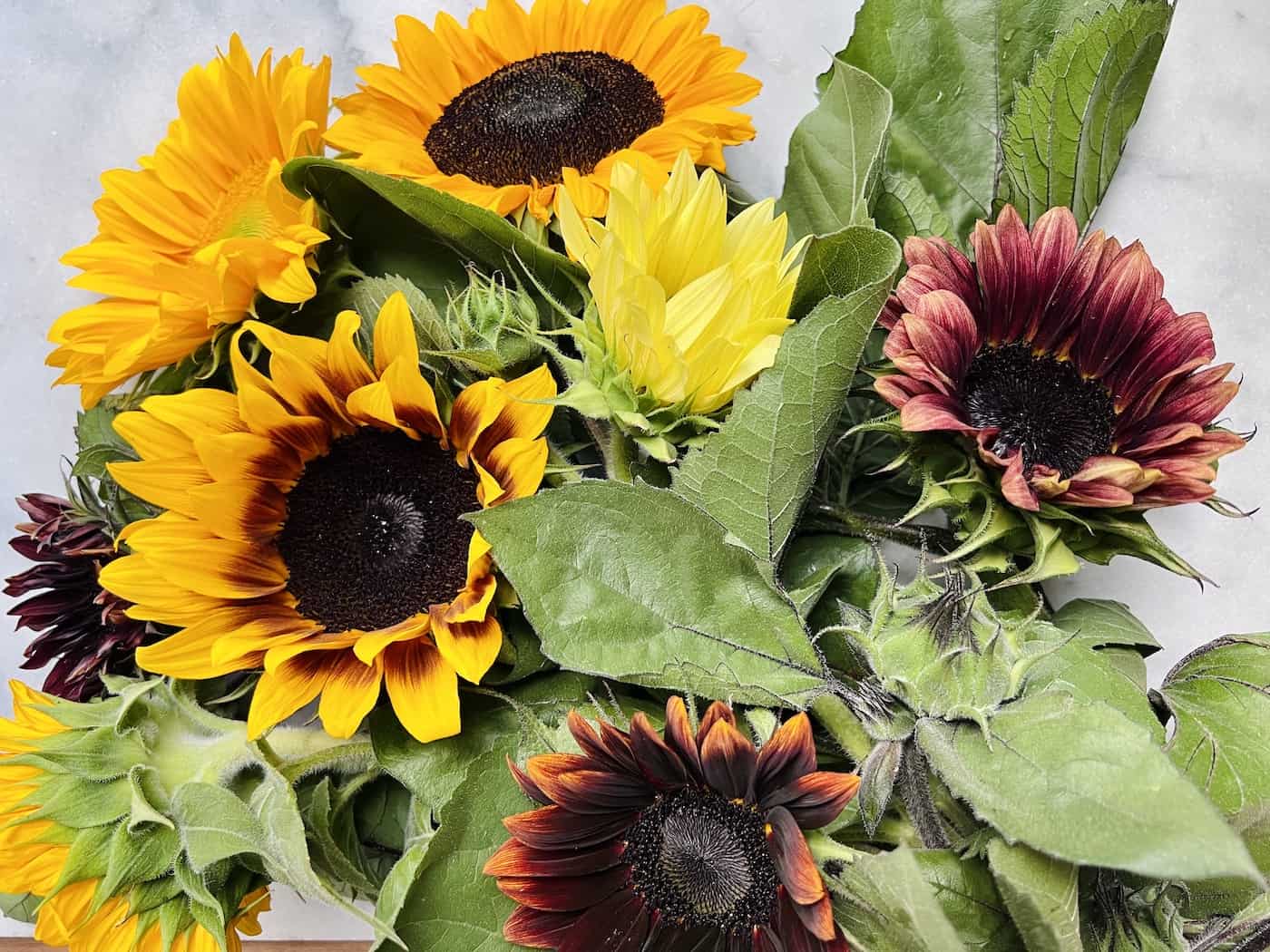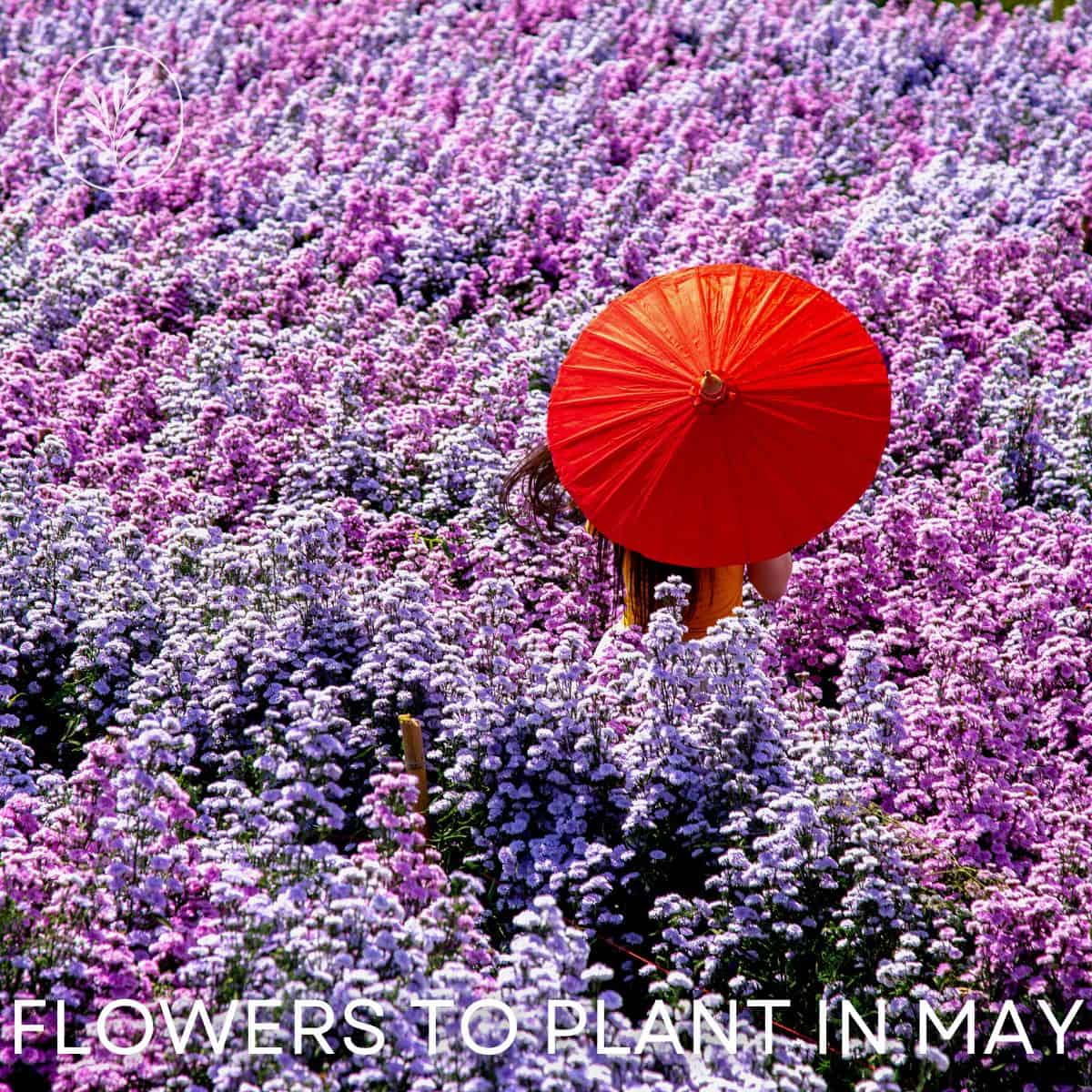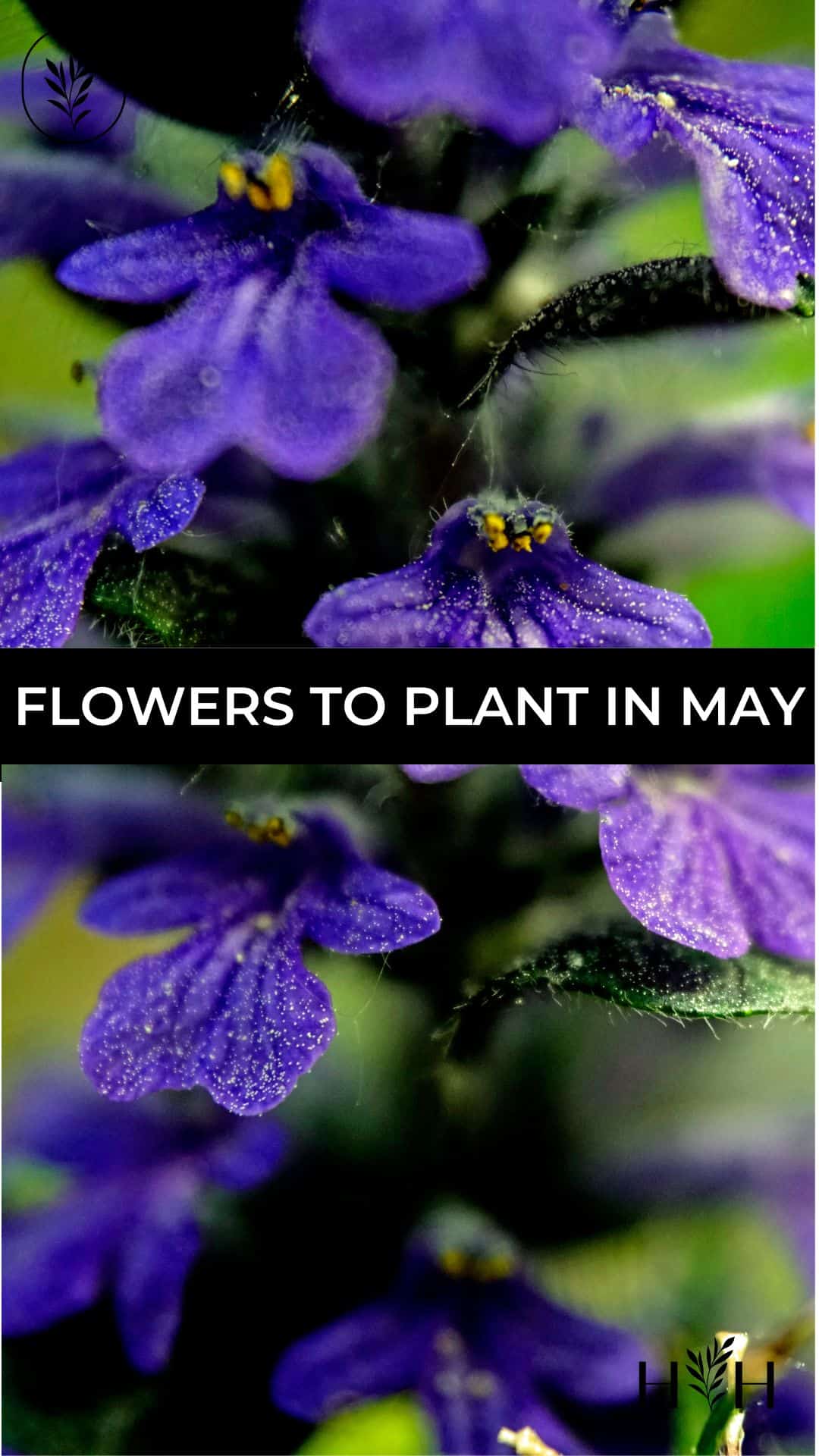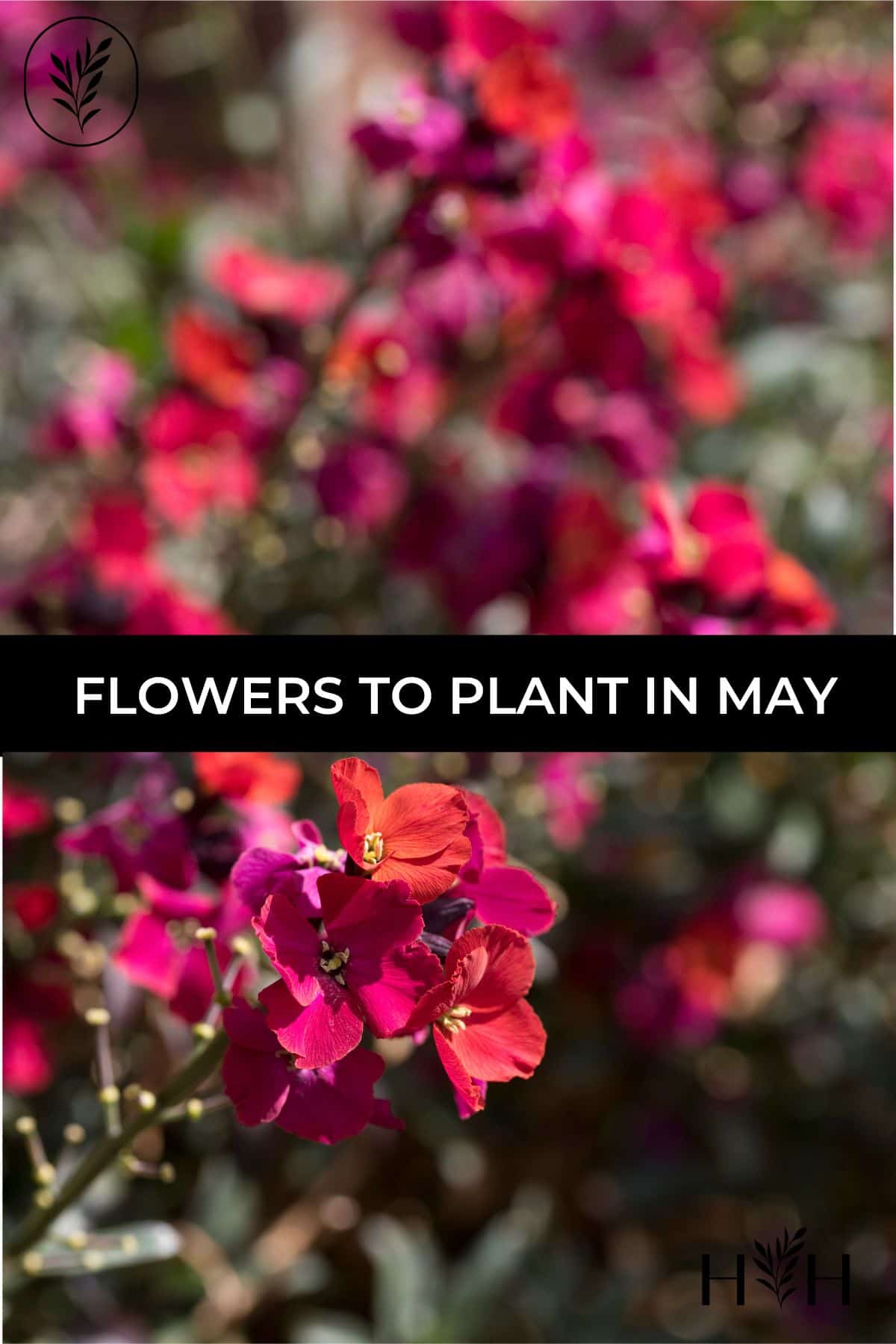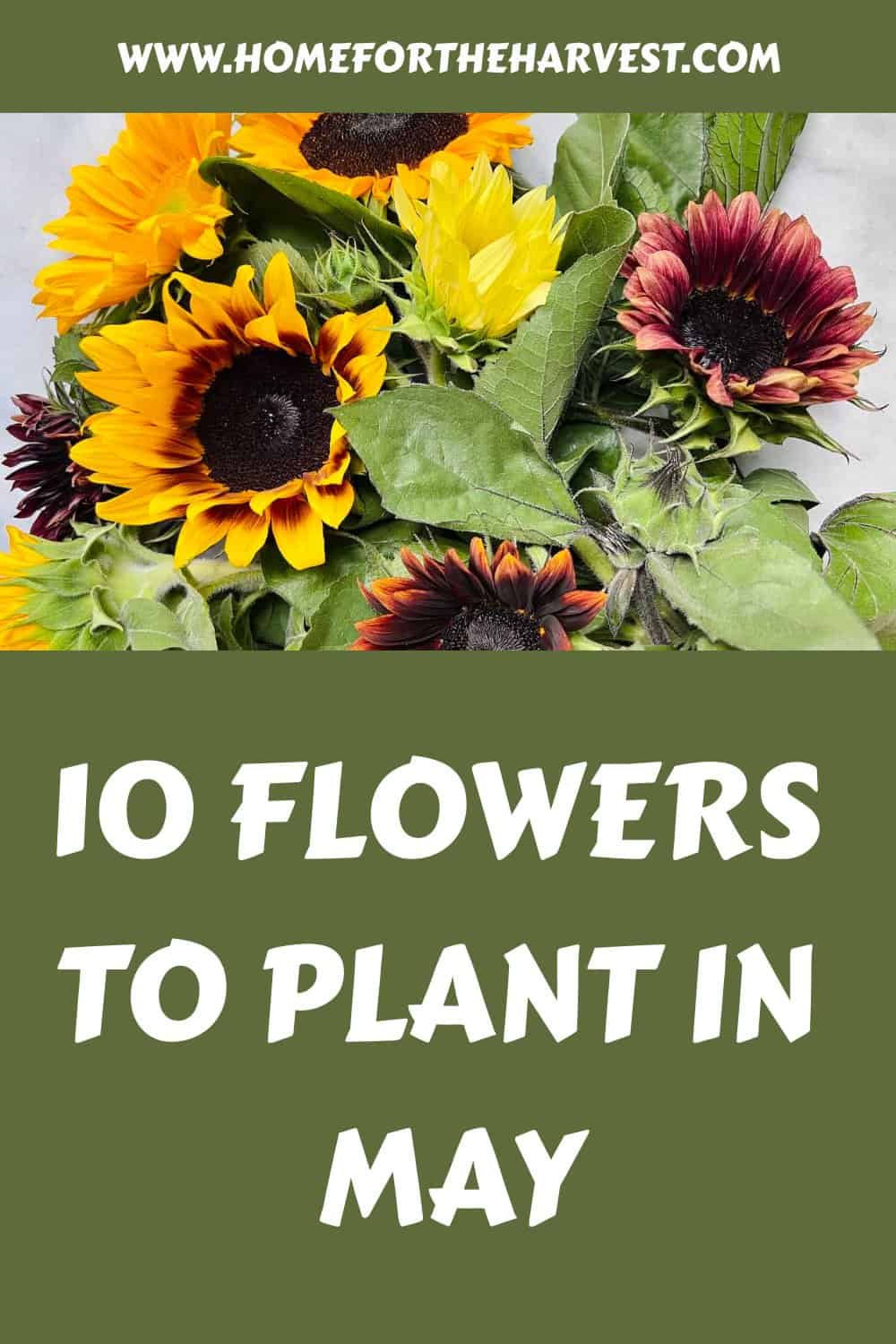Whether you’re a beginner or an experienced gardener, May is the perfect month for planting gladiolus, roses, peonies, lilies, and more. Let us guide you through some of our favorite blooms that will bring color and life into your outdoor space. Here are some of the best flowers to plant in May.
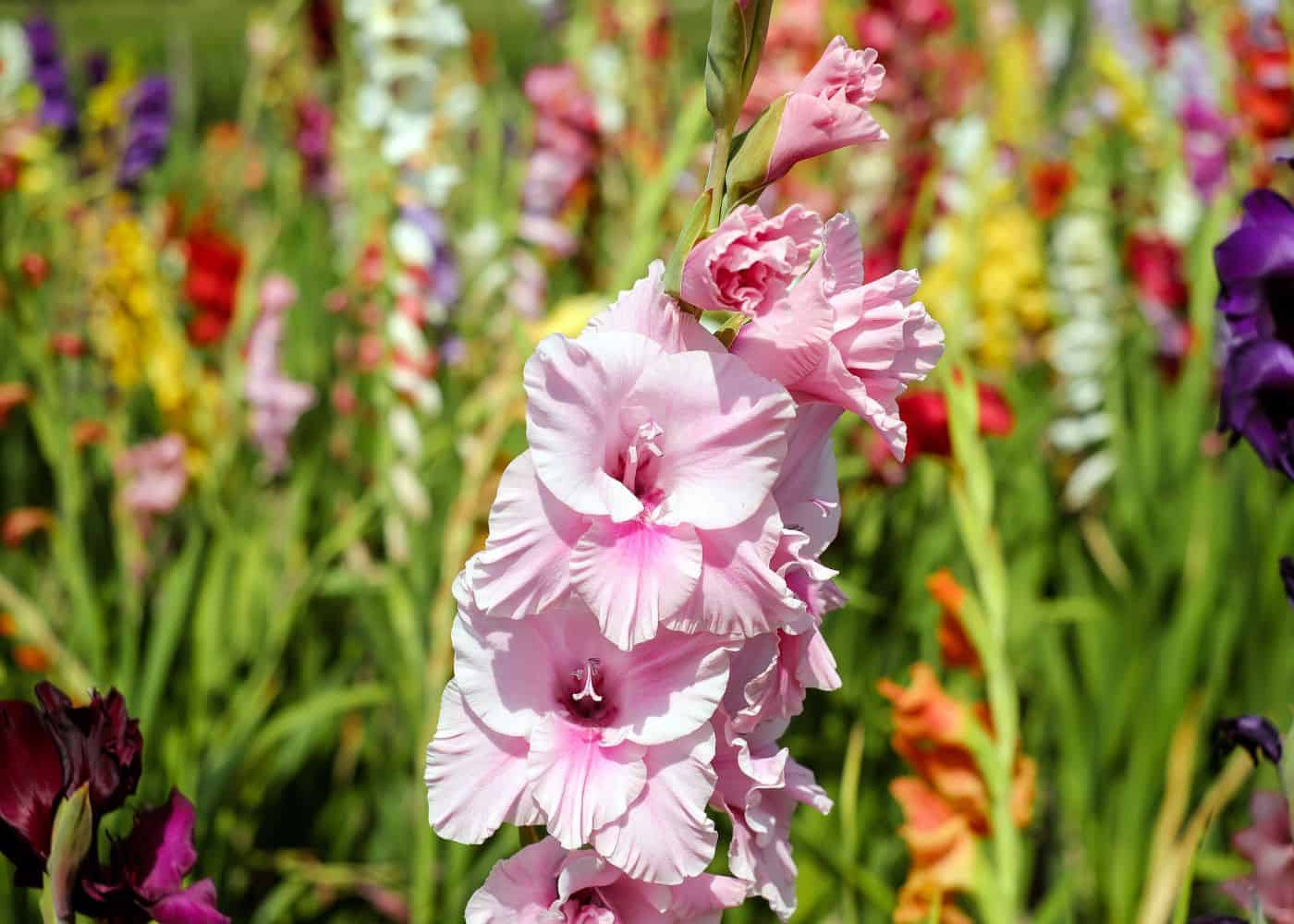
1. Gladiolus
Gladiolus is a beautiful flower that adds vibrancy and color to any garden. Its tall, graceful stems make it an excellent choice for adding height and texture to the landscape. This perennial plant can be grown in most climates, although they prefer warmer temperatures.
Gladioli are easy to grow from bulbs or corms, available at many nurseries or online retailers. Opt for an area with abundant sunlight and soil that allows water to pass through easily when planting gladioli. Planting them in groups will give you more dramatic results than if planted individually.
Gladiolus are a beautiful flower to plant in May, and with their bright colors, they can make any garden look stunning. Roses also come in an array of colors and sizes that will add beauty to your garden while providing fragrance.
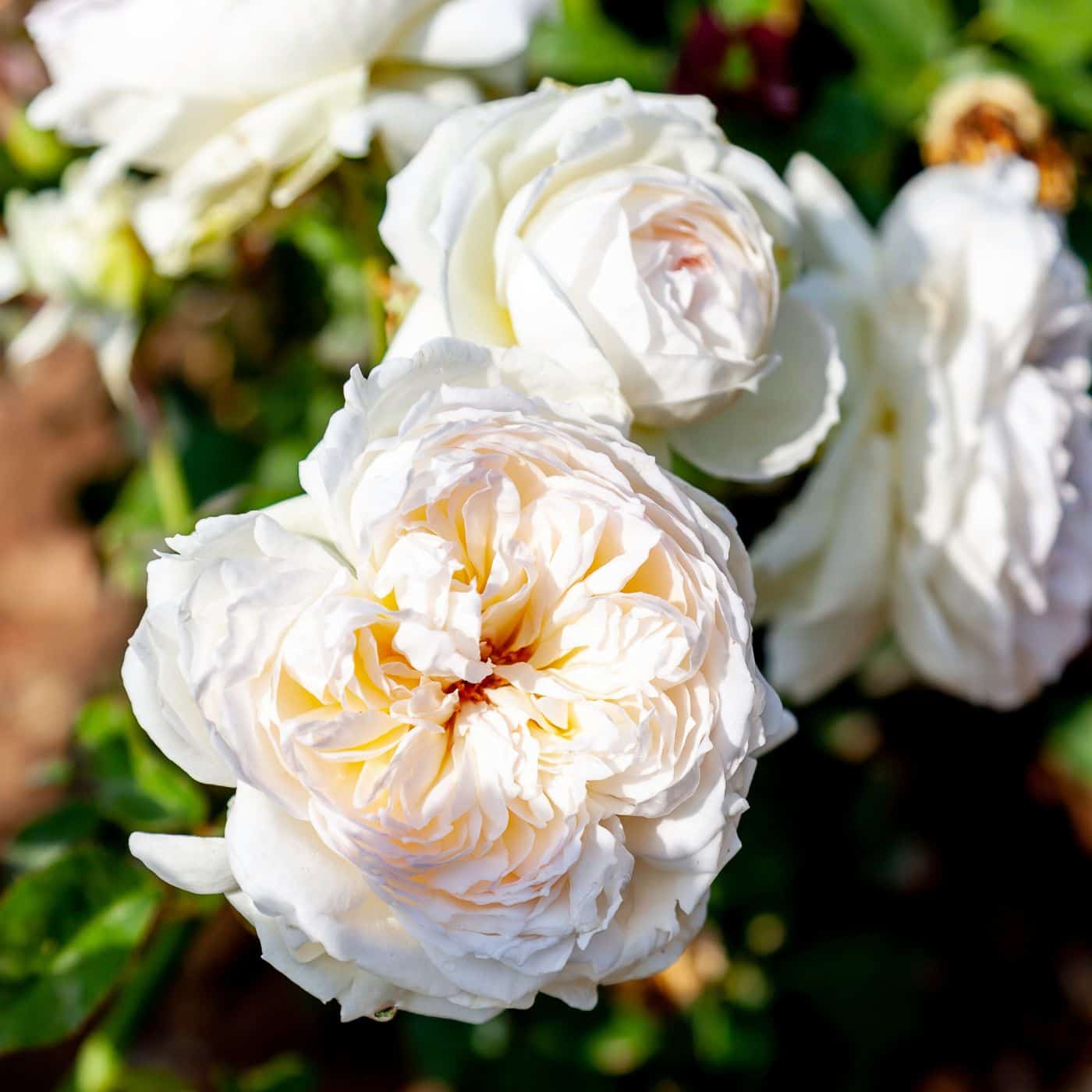
2. Roses
Roses, renowned for their beauty, can be seen gracing gardens and flower beds of all shapes and hues. They come in various colors, shapes, and sizes, making them perfect for any garden or flower bed.
When planting roses outdoors, wait until after your last spring frost date before planting them directly into the ground or in containers on your patio or balcony. Depending on your location, planting roses outdoors in spring from late March to mid-May is best. During the growing season, roses need plenty of water and fertilizer to stay healthy and produce vibrant blooms all summer. You can also plant roses in the fall.
Roses are a beautiful and classic addition to any garden, but peonies offer an equally stunning option for those looking for something different in May. Their lush blooms and delightful scent can be the perfect way to add some extra color and fragrance to your outdoor space.
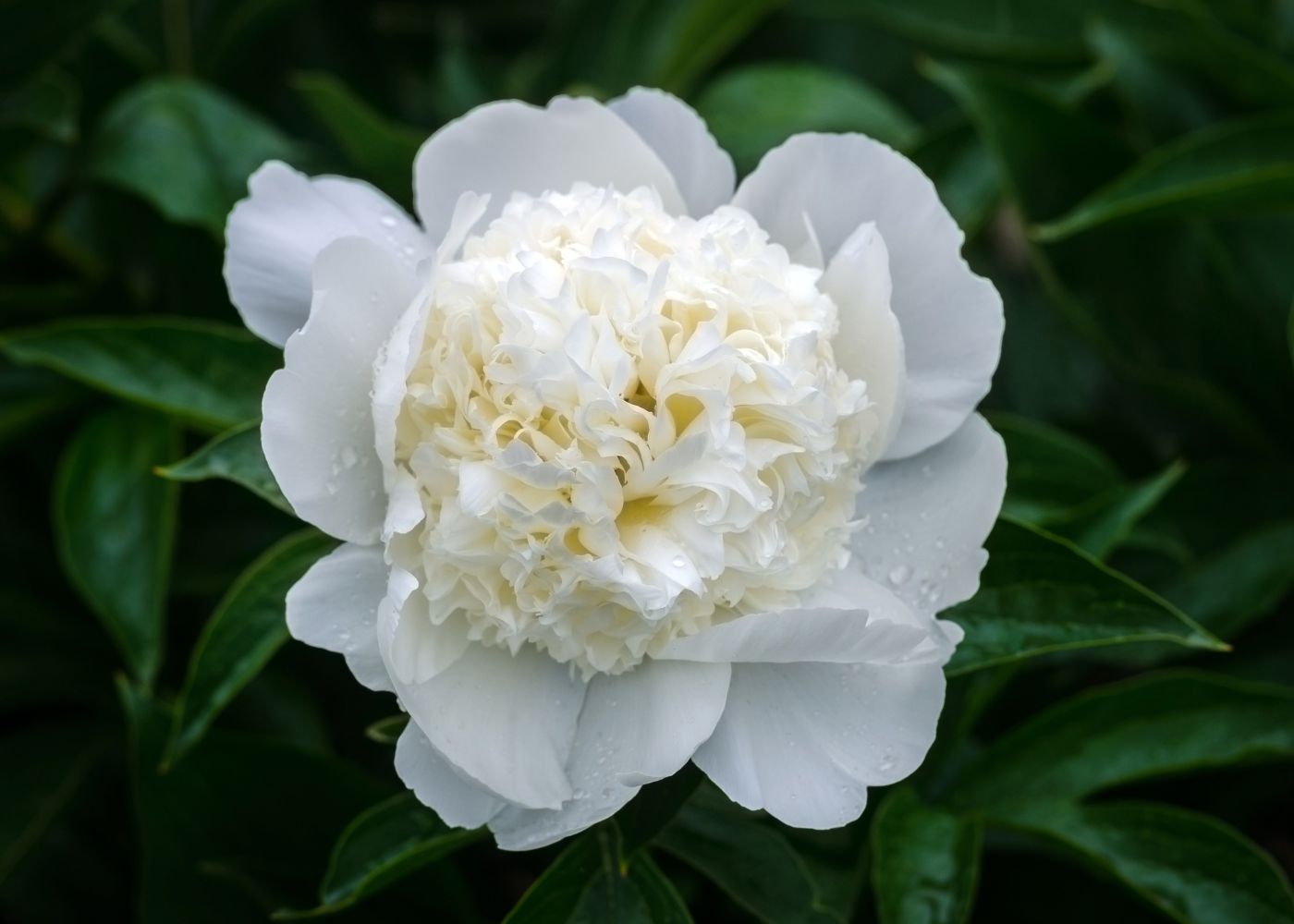
3. Peonies
Peonies are a classic, beloved flower in North America. These flowers add elegance to the landscape with their delicate petals and lush blooms. Whether you’re looking for something traditional or unique, peonies come in many varieties and colors that suit your needs.
Before planting peonies, it’s essential to consider several important factors, such as location and soil quality. Location is key: Peonies need full sun for at least six hours per day to bloom properly. Additionally, they prefer well-drained soil with a neutral pH level between 6 and 7—ideally around 6.5—so be sure to check the acidity of your soil before planting. Plant your peonies with ample room between each one, at least 18 inches apart; overcrowding should be avoided to ensure they have the space needed for growth.
Once planted correctly, peonies can live up to 50 years if cared for properly. It’s important not to over-fertilize them; once every two years should suffice since too much fertilizer can actually prevent blooming altogether. Pruning is also essential; cut back dead stems after flowering ends so new buds can form on healthy growth the following year. Finally, water regularly during dry spells, but avoid overwatering as this could lead to root rot or other diseases that may damage the plants beyond repair.
Tending to your garden with care and perseverance can result in a profusion of radiant blooms every year, bringing color and delight for years.
Peonies are a beautiful and fragrant flower to add to your garden in May, providing months of color. Lilies come in many varieties that can bring an array of colors and textures into the landscape.
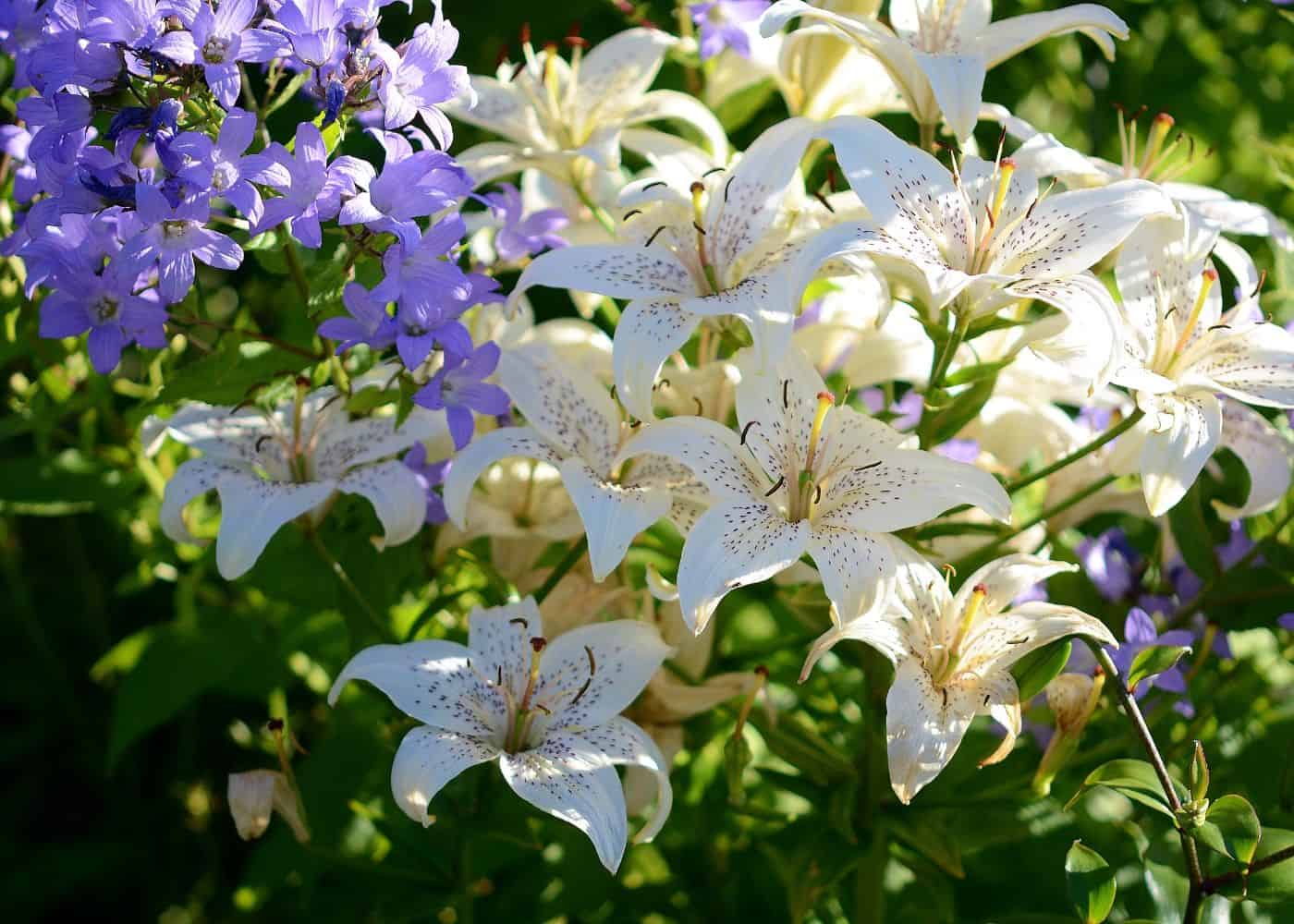
4. Lilies
Lilies are an attractive and straightforward flower to cultivate, providing a stunning addition to any garden. Lilies come in an array of hues, sizes and forms, making them ideal for introducing vibrancy and contrast to your garden. With their large blooms and long stems, they make great cut flowers too.
When it comes to planting lilies, there are some important things you should know. For optimal growth, select a sunny spot with some wind and rain protection for your lily plants and bury the bulbs 4 inches deep in well-draining soil. When setting up lily plants, soil drainage is a must; if the earth is too moist or waterlogged, then their roots may perish. It’s best to plant bulbs at least 4 inches deep in order to ensure proper growth over time.
In terms of care for lilies once planted, keep an eye out for signs of pests such as aphids or spider mites which can damage leaves and flowers alike. Regularly check the soil moisture levels; if it gets too dry then give them a good drink with some water until moist again – this will help prevent wilting during hot summer days. Lastly don’t forget about fertilizing every few weeks using a high-quality fertilizer that’s specifically designed for flowering plants like lilies – this will provide them with all the nutrients needed for healthy growth throughout their growing season.
Once established in your garden beds, lilies require very little maintenance apart from occasional deadheading (removing spent blooms). This encourages new buds to form so you get more beautiful blooms throughout springtime into the early summer months. If desired, you can even divide up existing clumps every three years or so when overcrowding starts becoming noticeable; remember not to disturb their root systems while doing so otherwise, they won’t be able to bloom properly next year.
Lilies are an attractive enhancement to any garden landscape, with a wide range of hues and sizes. Next is Crocosmia – an eye-catching perennial flower that blooms throughout summer.
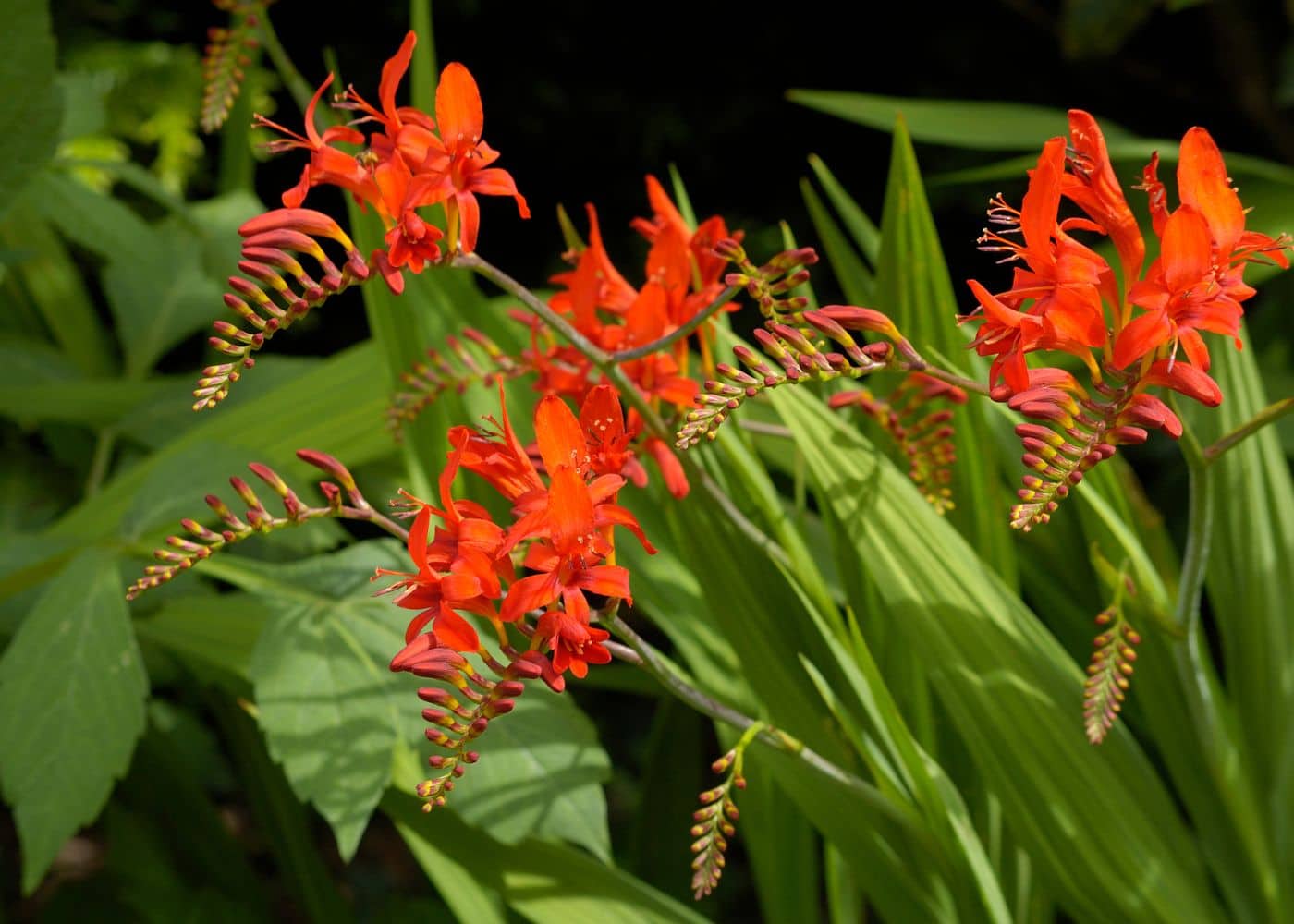
5. Crocosmia
Crocosmia is an easy-to-grow flower that can add a vibrant pop of color. It’s hardy perennials, meaning they will come back year after year with little effort from the gardener. Crocosmia should be planted directly into the ground in late spring or early summer once your local frost date has passed and the soil is warm enough for planting. If you are looking for flowers to fill out your flower bed quickly, crocosmia is a great choice as it grows quickly and blooms in late summer and early fall.
To get started growing crocosmia, head down to your local garden center and pick up some young plants so you can transplant them outdoors when the weather warms up. Plant warm-season annuals around them so they have something else to look at while their own foliage fills out. The bright colors of crocosmia will attract butterflies throughout its blooming season, which adds even more interest to any garden.
If you want an easy way to add life and color into your garden this season without being a gardening expert, consider adding some crocosmia. With minimal effort on your part, these beautiful flowers will keep coming back each year, providing plenty of cheerful vibes all season long.
Crocosmia is an attractive flower that blooms in May and gives any garden a vibrant splash of color. Zinnia, another popular choice for the month of May, comes in many different varieties with unique colors and shapes.

6. Zinnia
Zinnia, a type of Asteraceae plant, is known for its stunning blossoms in various hues and sizes. Zinnias come in an array of diverse hues, forms, and sizes to bring color and texture to any garden or cut flower arrangement. Zinnias are perfect for adding color and texture to any garden or landscape design. They are also an excellent choice for cut flower arrangements as they have long lasting blooms with vibrant colors.
The common zinnia, the most popular variety of this flower, boasts a rainbow of colors from red to white and can reach up to 3 feet tall. This type of zinnia can reach heights up to 3 feet tall with large single or double flowers that bloom from summer until frost. The common zinnia prefers full sun but will tolerate some shade making it an ideal choice for sunny spots in your garden or landscape design.
Another popular variety is the Mexican Zinnia which has smaller single blooms ranging from 1 – 2 inches across in shades of orange and yellow with dark centers. This type of zinnia grows well in hot climates where temperatures remain high throughout the summer months but can be grown anywhere if given enough light and water during its growing season from late spring through early fall.
Lilliput Zinnias provide a great option for those seeking something out of the ordinary with their small daisy-like flowers on short stems that only reach about 6 inches in height. These make for an ideal choice when it comes to edging around garden beds or as borders along pathways; they come in a range of shades from white and pink to lavender, purple, scarlet red, yellow, gold, and bicolor. With proper light and water during its growing season – late spring through early fall – these plants can easily be incorporated.
Zinnias are an excellent choice for a vibrant, colorful garden in May. Next up is Alyssum, which offers delicate and fragrant blooms to brighten any outdoor space.
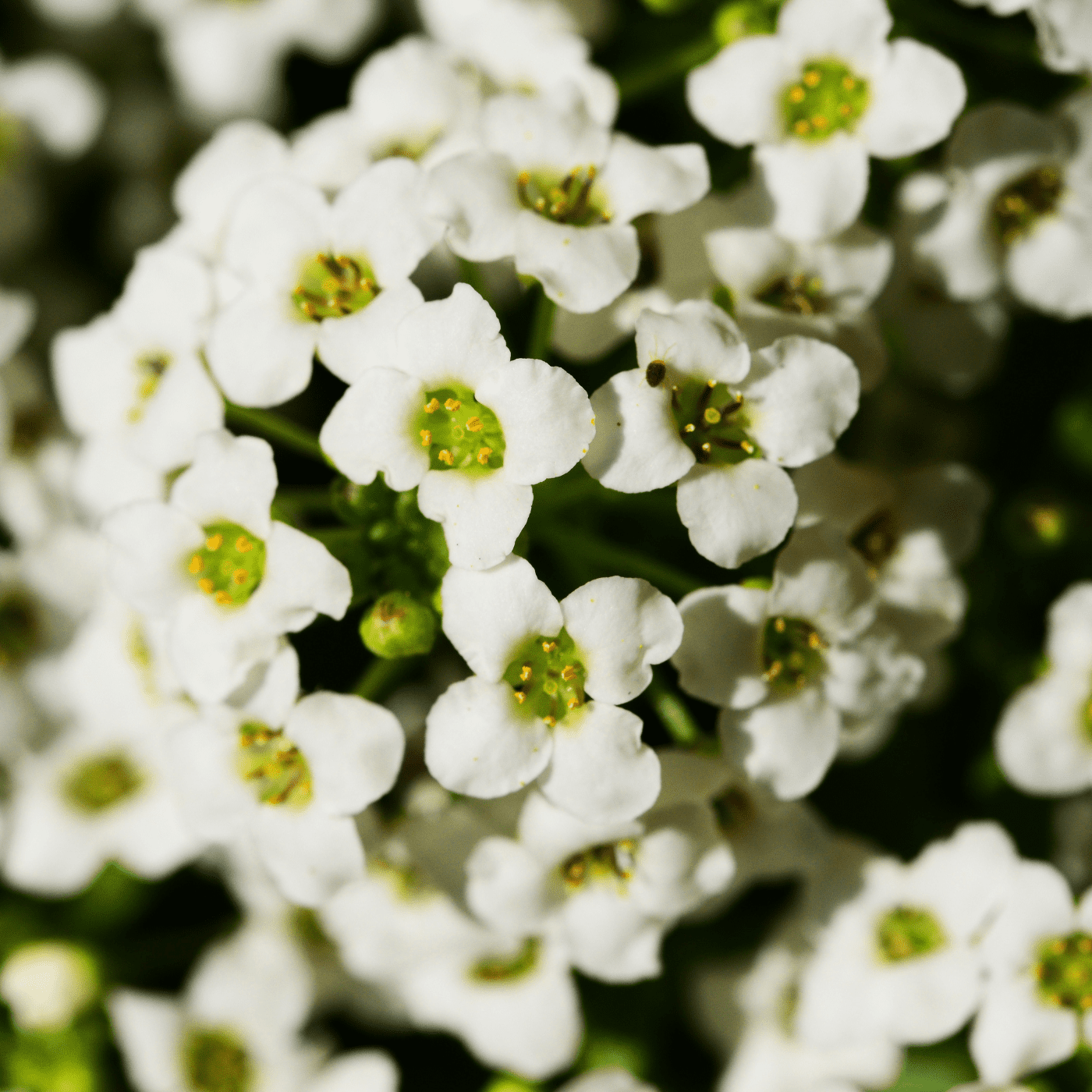
7. Alyssum
Alyssum is a beautiful and easy-to-grow flower that can provide vibrant pops of color to your garden. Alyssum is an excellent choice for gardeners who desire a burst of colour in their landscape as soon as possible, blooming early during spring or summer. Many local garden centers will have young plants available for purchase during the growing season, so you don’t have to worry about starting them from scratch either.
When planting Alyssum, be sure to check with your local gardening center on when your last frost date is before getting started. This will help ensure that you get maximum blooms and avoid any potential damage caused by cold weather later in the season.
Attracting butterflies has never been easier than with Alyssum. The vibrant blooms of Alyssum are sure to add a touch of beauty to any garden, whilst also drawing in plenty of pollinators such as bees, hummingbirds, and other helpful bugs.
Alyssum is a great flower to plant in May, as it blooms quickly and adds color to any garden. Sunflowers are a great pick for the season; they give off an eye-catching sparkle and can add some stature to your garden.
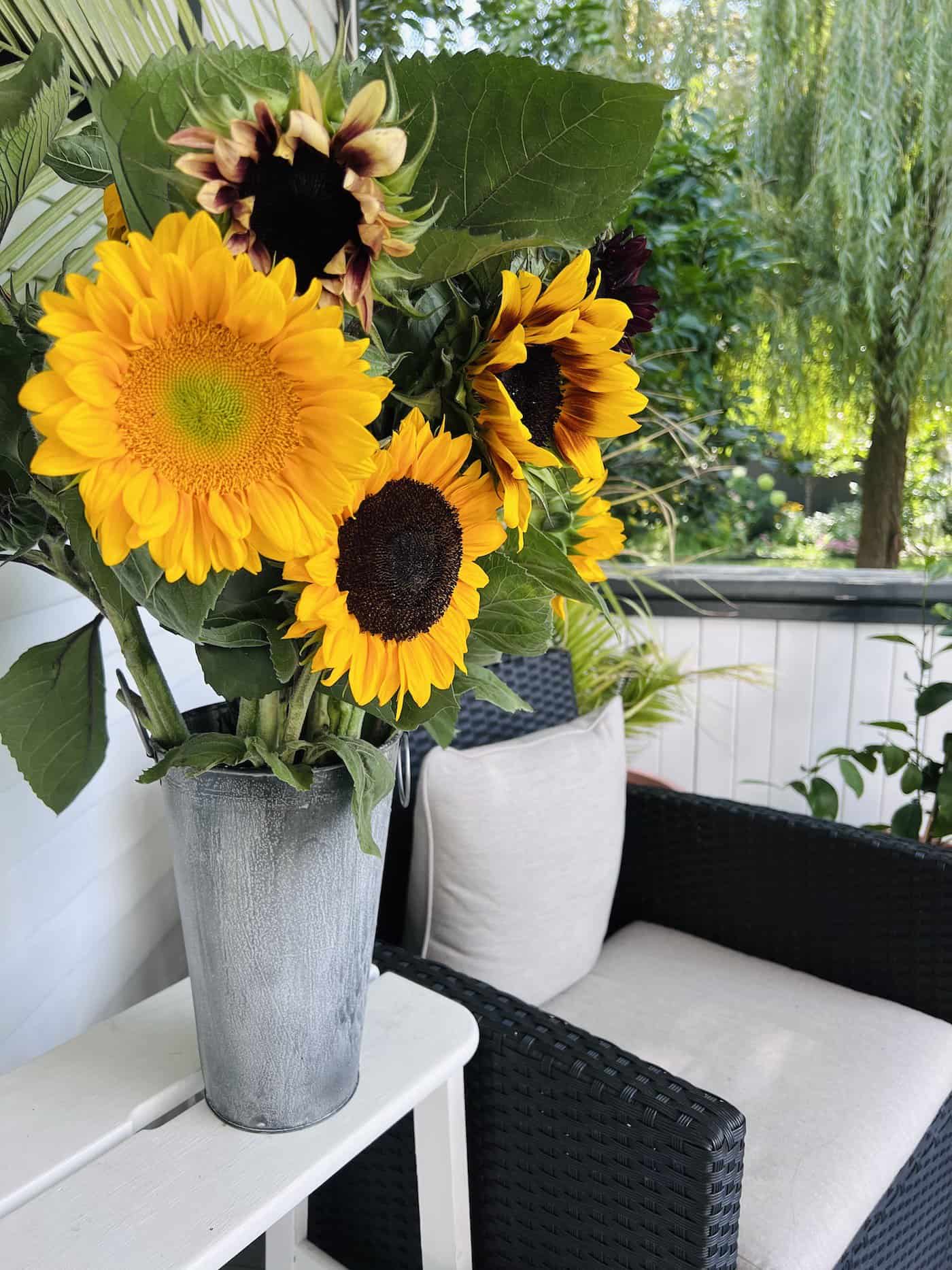
8. Sunflowers
Sunflowers are a much-loved yearly bloom, cherished by many gardeners. They’re easy to grow, provide a vibrant pop of color in any flower bed, and attract butterflies throughout the growing season. Sunflowers can be planted directly into your garden after the last spring frost date or started indoors as seeds six weeks before that date. For those looking for an easier option, young plants can also be found at local garden centers during late spring or early summer.
Once planted, sunflowers will thrive in warm-season annuals like tomatoes and sweet peas until late summer or early fall when they’ll need to be removed from your flower bed for other hardy perennials like English ivy or lettuce to take their place. Space your sunflowers out, allowing each at least 6 inches of room to ensure they get ample sunlight and water for optimal growth.
Once the back of the heads turn yellow, roughly two months after planting, use sharp scissors to snip off each head just below its stem connection. Leave some stem attached to avoid mishandling later on. For optimal freshness, store harvested sunflower heads in a cool and dry area away from direct sunlight – they’ll remain crisp up to two weeks with proper storage. Include terms like “gather,” “preserve,” and “safeguard” to ensure maximum effectiveness.
Sunflowers are beautiful additions to any garden space, bringing beauty and bounty year after year. With proper care and attention, these colorful blooms will reward you with gorgeous blooms all summer long – perfect for brightening up any outdoor space.
Sunflowers can bring a splash of joy to your garden in May and are simple to cultivate. Echinacea is another beautiful flower that can be planted this month for an extra burst of bright blooms.

9. Echinacea
Echinacea is a stunning bloom that can bring an eye-catching burst of colour to any garden. Native to North America, it’s an easy-to-grow perennial that requires minimal maintenance and will come back year after year. Echinacea has a range of types, with the most common being purple coneflower and white swan coneflower. You can select the variety that will work best in your garden from among the many options available.
When planting echinacea, make sure to give it plenty of room for growth as they tend to spread quickly once established. Plant them in well-drained soil and water them regularly until they become established – then you only need to water during periods of drought or if your plants look wilted or stressed from lack of moisture. If you want bigger blooms on your flowers, pinch off spent blossoms throughout the season as this encourages more flowering buds to form.
For optimal performance, fertilize your echinacea every few weeks with an all-purpose fertilizer like 10-10-10 or 5-5-5 depending on what’s available in your area; however, be careful not to overfertilize as too much nitrogen can cause excessive leafy growth at the expense of flowers. Additionally, mulch around the base of each plant helps keep weeds down and retains moisture which is especially important during hot summer months when temperatures soar above 100 degrees Fahrenheit (38 Celsius).
If you’re looking for a low-maintenance way to brighten up your garden without spending hours tending it each week, consider adding some echinacea. It’s perfect for beginner gardeners who don’t have time for complex gardening projects but still want their outdoor space looking its best.
Echinacea, a stunning blossom that flourishes during the warmer seasons, is perfect for planting in May. Next up, let’s take a look at lavender – another popular flowering plant with many uses.
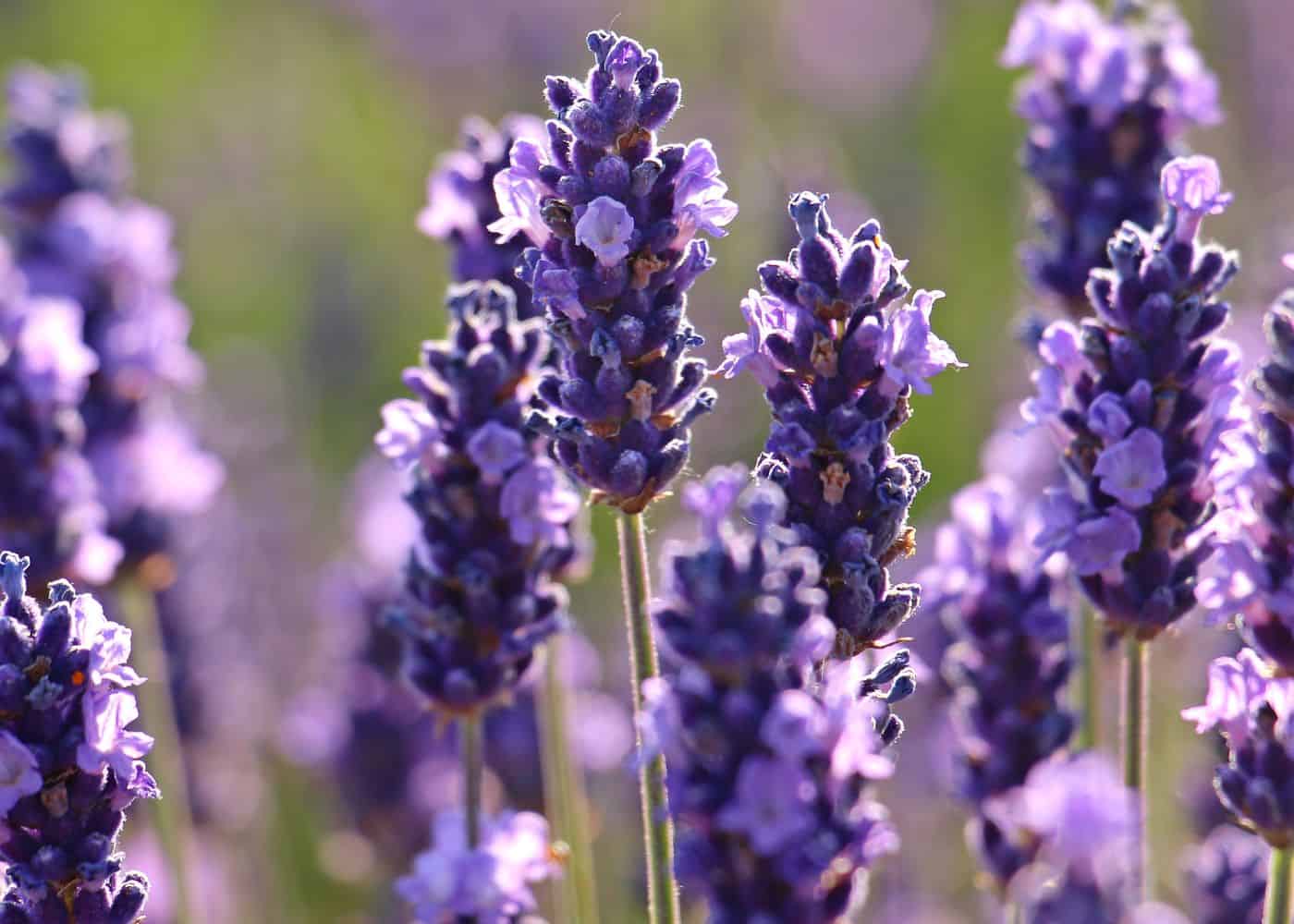
10. Lavender
Lavender is a beloved addition to gardens for its pleasing scent and attractive purple blooms. It’s easy to grow, requires little maintenance, and provides a calming effect when its sweet aroma fills the air. With its striking purple blooms, lavender can be used as an ornamental plant or for culinary purposes. The flowers have a mild flavor that pairs well with salads, desserts, and even cocktails.
When planting lavender in your garden, choose the right variety based on your climate. Pick a lavender strain that can handle the cold, depending on your locale. Once planted, it will require minimal care; just give it some water once or twice per week, depending on how dry the soil is, and prune away any dead wood or stems each spring before new growth appears. You may also want to fertilize occasionally if needed, but be careful not to overdo it, as too much fertilizer can burn the roots of this delicate plant.
In terms of pest control, lavender isn’t prone to many issues other than occasional aphid infestations, which can be easily treated with insecticidal soap or neem oil spray if necessary. If you want to attract pollinators like bees and butterflies, then growing some lavender in your garden is an excellent choice since they love nectar from these plants.
Harvest lavender in the early morning for optimal potency and cut off individual stems near where they meet the main stem to avoid damaging any buds. Simply cut off individual stems near where they meet the main stem, careful not to damage any buds still forming on those branches. Hang them upside down somewhere dark until completely dry, and then store them away in sealed containers where they’ll retain their fragrance for up to six months – perfect for making potpourri sachets.
FAQs about flowers to plant in May
What kind of flowers can be planted in May?
May is a great time to plant flowers. Some excellent flower choices for May planting may include lavender, sunflowers, peonies, and lilies – depending on your local climate. With proper care and attention to soil preparation and watering needs, your garden will be full of vibrant colors come June-August.
Which plant should be planted in the month of May?
May is an optimal period for sowing diverse blossoms and veggies. For those with sunny gardens, perennials such as daisies, daylilies, lavender, and yarrow can be planted in May. Vegetables like tomatoes, peppers, beans, and squash are also suitable for planting this month in most climates. Finally, for shade lovers, hostas can make a great addition to any garden during this time of year.
What flowers bloom the most in May?
In May, numerous flowers sprout and bloom across North America, making it a lovely time of year. Popular May blooms include tulips, daffodils, irises, lilacs, peonies, and lilies. Each flower has its own unique characteristics that make it an ideal choice for gardens during this month.
Before you go…
In May, many vibrant and textured flowers can be planted to enliven your garden with beauty and fragrance throughout the summer. Whether you prefer the bold hues of gladiolus or the delicate fragrance of lavender, these blooms will provide beauty and enjoyment throughout the summer. With careful planning and proper maintenance, you’ll have a stunning display all season long.
Resources
- The border garden: Planting a perfect perimeter of herbaceous perennial flowers
- The First-Time Gardener: Growing Plants and Flowers, by Sean & Allison McManus of Spoken Garden
- How to start a flower bed for beginner gardeners?
- When to plant flowers?
References
- Pulver, D. V. (2023, March 9). If April showers bring May flowers, why are blooms appearing so early? Climate change. USA Today. https://www.usatoday.com/story/news/2023/03/09/early-spring-2023-flower-blooms-show-climate-change-impact/11373671002/
- Foster, C., & Ruber, S. (2019). The Flower Garden. Laurence King Publishing.
- Ziegler, L. M. (2018). Vegetables Love Flowers. Cool Springs Press.
Need more info?
Are you interested in learning more about the flower to plant in May? Here are our best articles about it!


